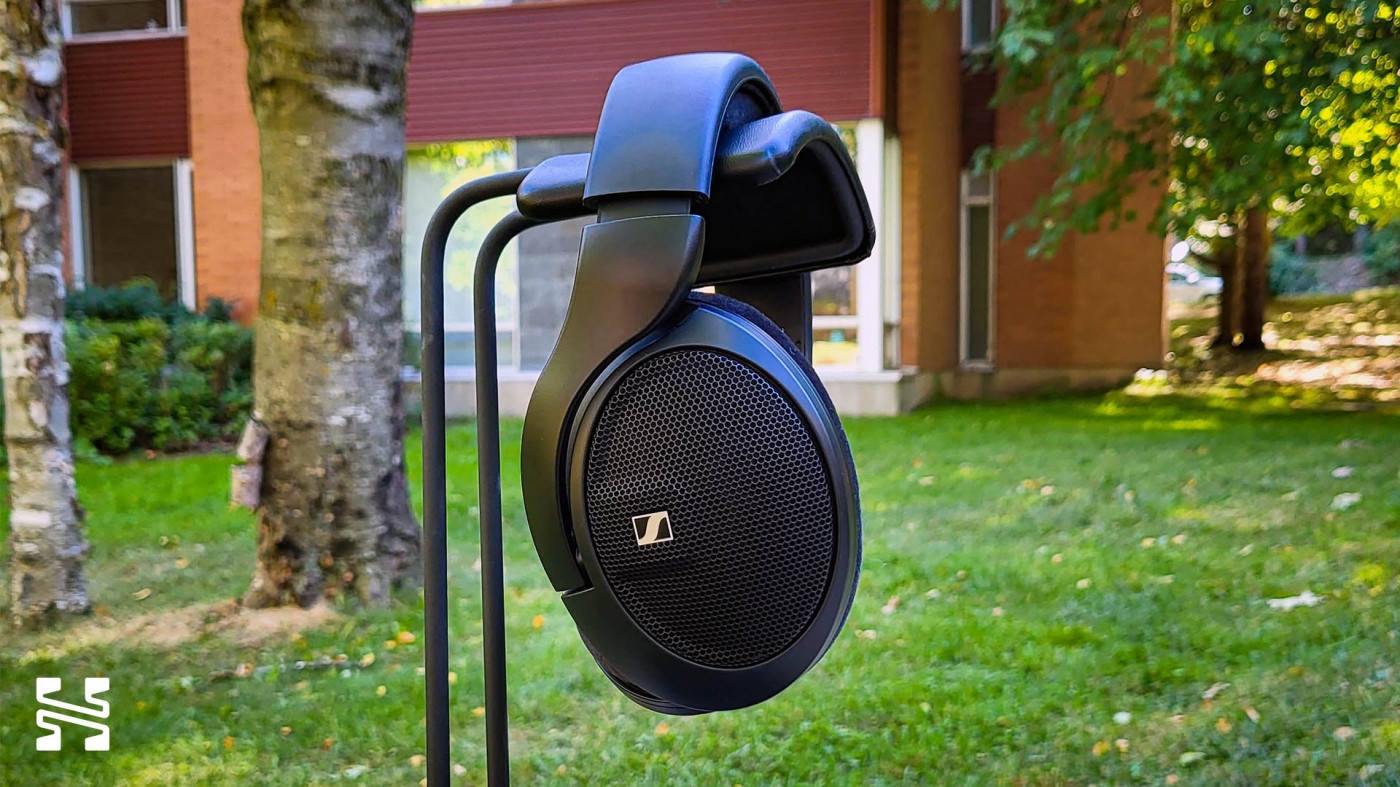Sennheiser HD560S vs. HD600 Comparative Review

Sennheiser HD560S vs. HD600 Comparative Review
Written by Fc-Construct
Introduction
In the personal audio world, there are no other headphones more well-known than Sennheiser’s legendary HD6X0 line. Consisting of the HD580, HD600, and HD650 (AKA HD6XX for the Drop.com version), these headphones are universally recommended for anyone looking to get started with their audio journey. And rightfully so given their robust build quality, great tonality, and fair technical performance at a reasonable price. In fact, for the longest time I had considered them to be the baseline headphone for “audiophile” level sound quality.
In September 2020, Sennheiser released the $200 Sennheiser HD560S where it gained traction as hobbyists looked to it as being a modern HD6X0 competitor at a more accessible price. However, interest waned as it seemed like it wasn’t a true replacement to the already ubiquitous HD6X0. And that brings us the topic of today’s review: a comparison between the HD560S and the HD600 and where the HD560S might make sense in the headphone landscape.
Note 1: The HD58X does not belong to the HD6X0 family. It doesn’t share the same drivers.
Note 2: The HD560S is not to be confused with Sennheiser’s many other HD5xx headphones such as the HD569 or HD598. This review is specifically for the HD560S. There are no other variants at the moment.
- Product Summary
- Build and Comfort
- Sound and Frequency Response
- Comparison to HD600
- Presentation
- Comparisons to HiFiMan HE400SE
- Conclusion
HD560S Product Summary
- Reasons to buy
- Great Tuning
- Solid Technical Performance for the Price
- Comfortable
- Reasons not to buy
- Awkward Pricing
- Slight Lower Treble Glare
 |
Get the Sennheiser HD560S for the best available price at headphones.com. |
Build and Comfort
The build of the HD560S is serviceable at best. To be fair, for $200 I can’t say I was expecting the premium experience but the all-plastic build of the HD560S does feel a little lackluster. Compared to the HD600, the plastic feels cheaper and the lack of a metal headband doesn’t exactly inspire confidence. That said, I have no doubt that the HD560S will last a very long time as Sennheiser headphones are wont to do.
The HD560S earcups are about the size of the HD600 and have a reasonable degree of horizontal and vertical swivel for adjustment on your head. Clamp force is fairly strong, particularly just above your earcups, so there isn’t an equal amount of pressure distributed. The seal is a little tighter at the top half rather than the bottom. However, with more use as the headband loosens up, this shouldn’t be an issue in the future. Speaking of the headband, it has a good range of adjustment and should be able to accommodate heads of all sizes except for the very largest.
The ear and head pads are made of a soft velour and firm-ish foam. It uses Sennheiser’s newer headband design with two large foam pads and an indent in the middle to better distribute the load without the dreaded pressure spot in the center. It’s also quite a light headphone. At 240 g, it’s fractionally lighter than the 260 g HD600. All in all, there’s not much to say other than it’s a fairly comfortable headphone to wear. It does get warm on the ears over time like many headphones do, though I think it’s more breathable than the HD600.
Finally, for accessories HD560S has a 3 m detachable cable and a 6.3 mm to 3.5 mm adapter. This cable connects to the left earcup with a locking mechanism to keep it in place. It’s a rubbery cable with a fair amount of cable memory and noise. I’d personally consider replacing it if I were to use it as my daily driver. Note however that it is a 2.5 mm jack. You’ll want to double check if your replacement cable has a 2.5 mm end.
Sound and Frequency Response
At first listen of the HD560S, I can safely say that Sennheiser has done a very good of the tuning. To an extent, this was to be expected given Sennheiser’s heritage. However, I didn’t expect them to get it quite this right as Sennheiser hasn’t created many headphones this well tuned in a long time. While I do have a few quibbles about its sound, as a whole you’d have to be extremely picky to take offense to the HD560S’ tuning.
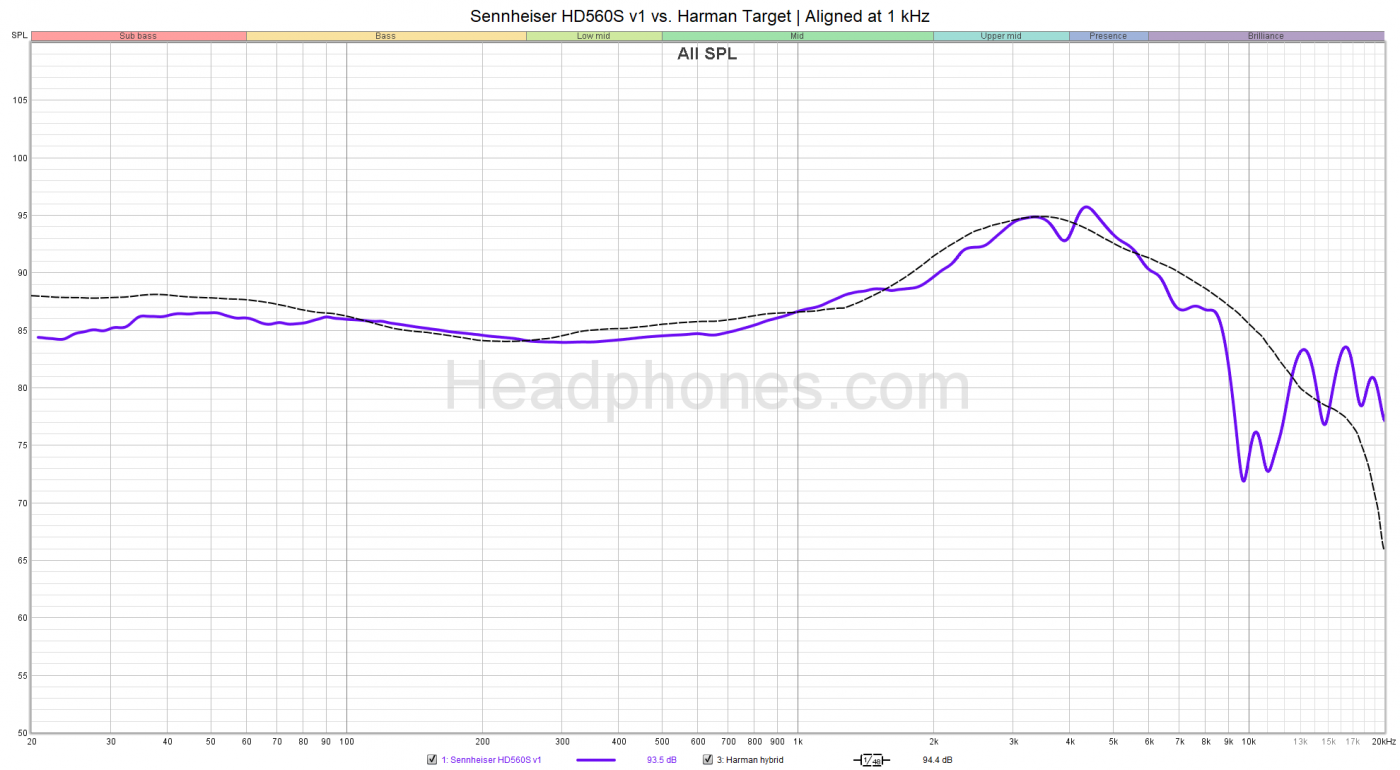
Measurement of the Sennheiser HD560S on an industry standard GRAS 43AG measurement rig. The dotted black line represents the Harman target, a reference frequency response developed using consumer preferences. The purple line is how the headphone in question measures. Effectively, this shows how significantly the headphone’s frequency response deviates from the target. Note however that the target is highly smoothed and strict adherence to the Harman target is not necessary for a headphone to sound good.
As we can see from this frequency response graph, the HD560S nails the critical upper midrange structure. Bass is leaner but similar to the 6X0 line-up with a minor midbass bump and subbass roll-off. Treble fairly reigned in without offending peaks, save perhaps for some lower treble brilliance.
The above graph was the first set of measurements by Resolve. Here is a second set of measurements after a bit of readjustments on the measuring set-up for a more consistent result. You can see his explanation here.
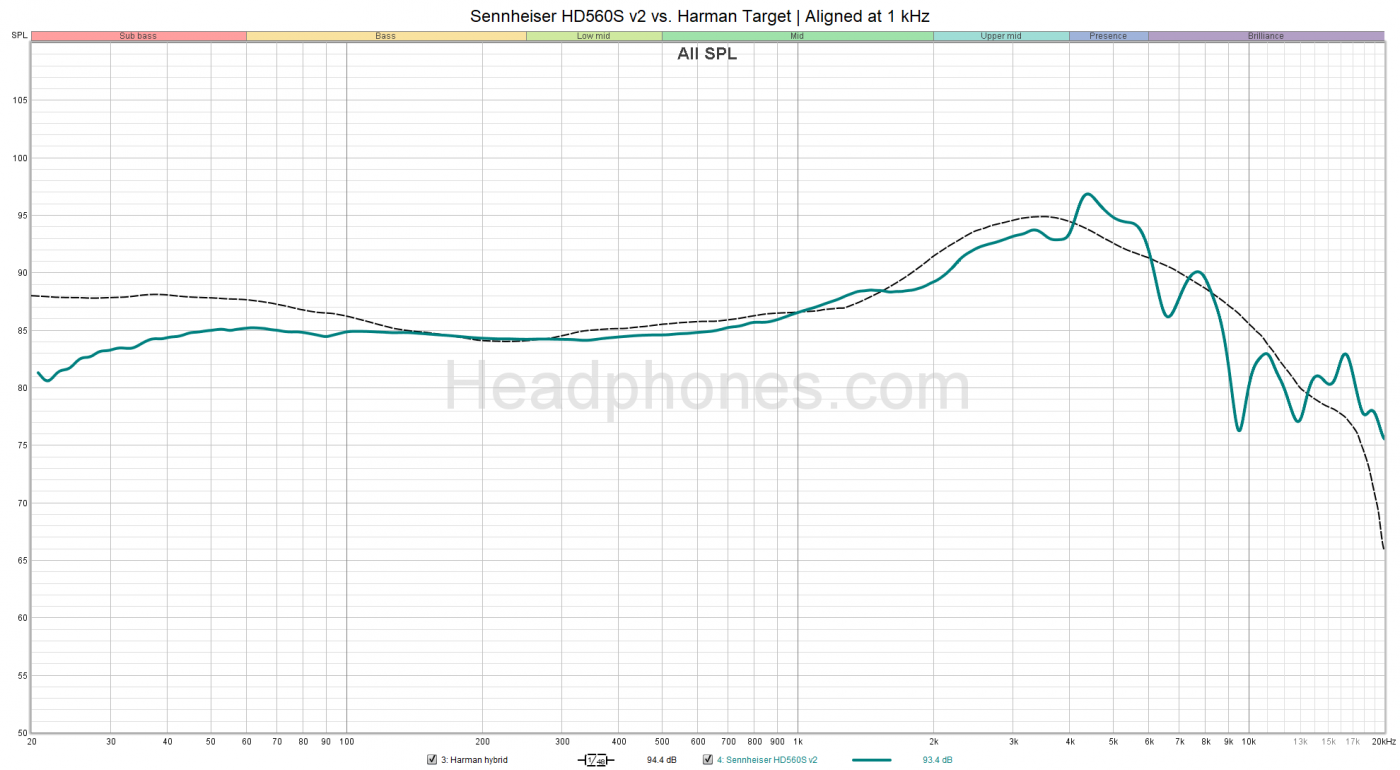
In this case, there’s a significant lower treble hump here. Personally however, my experience with the HD560S is closer to that of the first graph. The 4 – 6 kHz elevation is a lot less harsh to my ears than it seems on the graph, though I will fully admit that my treble tolerance is higher than average.
Comparison to HD600
Bass
The bass of the HD560S is adequate. It’s leaner than the HD600, with a slightly tighter transient punch which leads to better definition. That said, it’s a marginal improvement rather than a major difference. I wouldn’t call the HD560S a particularly punchy or dynamic headphone in the sense that you’re repeatedly riddled with notes of the kick drum. Rather, it’s more that it cleans up some of the shortcomings of the HD600’s bass to sharpen some of its blur. The trade-off however is the midbass presence of the HD600 is diminished, meaning that in some busy tracks, those notes are lost to the background.
While bass extension of the HD560S is a very welcome addition, it doesn’t actually change the way I look it. Though I certainly appreciate the increased subbass extension that brings the energy necessary for instruments like the kickdrum and floor toms to sound large and bodied, this is more of an icing on the cake rather than a key differentiator. Fundamentally, the bass is still limited by its relative lack of impact. Or to put it another way, the extended bass response of the HD560S should not be the reason you might get it over the HD6X0. You won’t suddenly be pulling these out to listen to EDM for example.
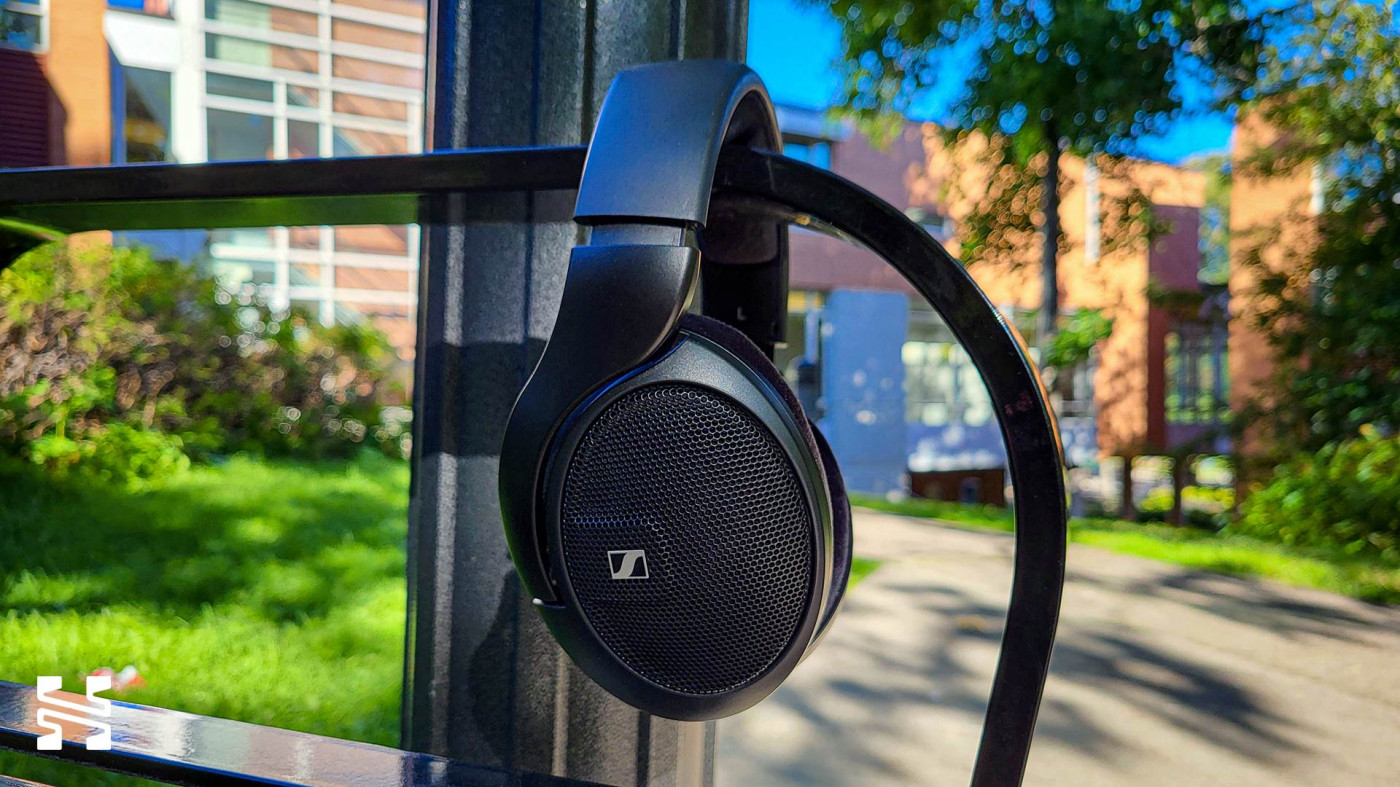
A note on the driver – yes, it is a dynamic driver and yes, it sounds like one too. Or rather, to avoid attributing timbral characteristics to driver types, I’ll just say that the HD560S sounds more like other dynamic driver headphones with regards to its bass than the planars. The leading edge of the transient is clean but rounded while the decay is extended in the way the HD600 is. If you want rapid fire bass guitar lines that start and stop on a dime, the HD560S is not it.
Mids and Treble
In general, the tonality of the HD560S’ mids are very good. However, it’s marred by the presence of the lower treble hump. It adds a sort of “glare” to instruments where their timbre is mostly correct except for a little bit of a harsh edge to them. Don’t get me wrong; it’s not a painful hump. It’s not peaky or overly sharp for me. It’s not really sibilant either to be honest. Rather, it’s when you listen to instruments with a strong upper mids presence, there’s a feeling of “ehhh… it’s a bit much” on some of its upper harmonics. For example, vocals, isolated piano notes, and blaring trumpets can sometimes come off like they’re being strained. This is most immediately apparent when doing a side-by-side comparison with the HD600. The HD600 is immediately smoother and more comfortable to listen to. That glaring edge is taken off. While I generally like having more vocal breath via more gain in this region, the HD560S doesn’t do it smoothly enough. To be clear, this isn’t a deal breaker in the HD560S’ tuning by any means. In fact, when I was initially listening to the HD560S, I didn’t take too much note of it. It was only upon comparison with the HD600 that it was clear how the hump affects the upper harmonics.
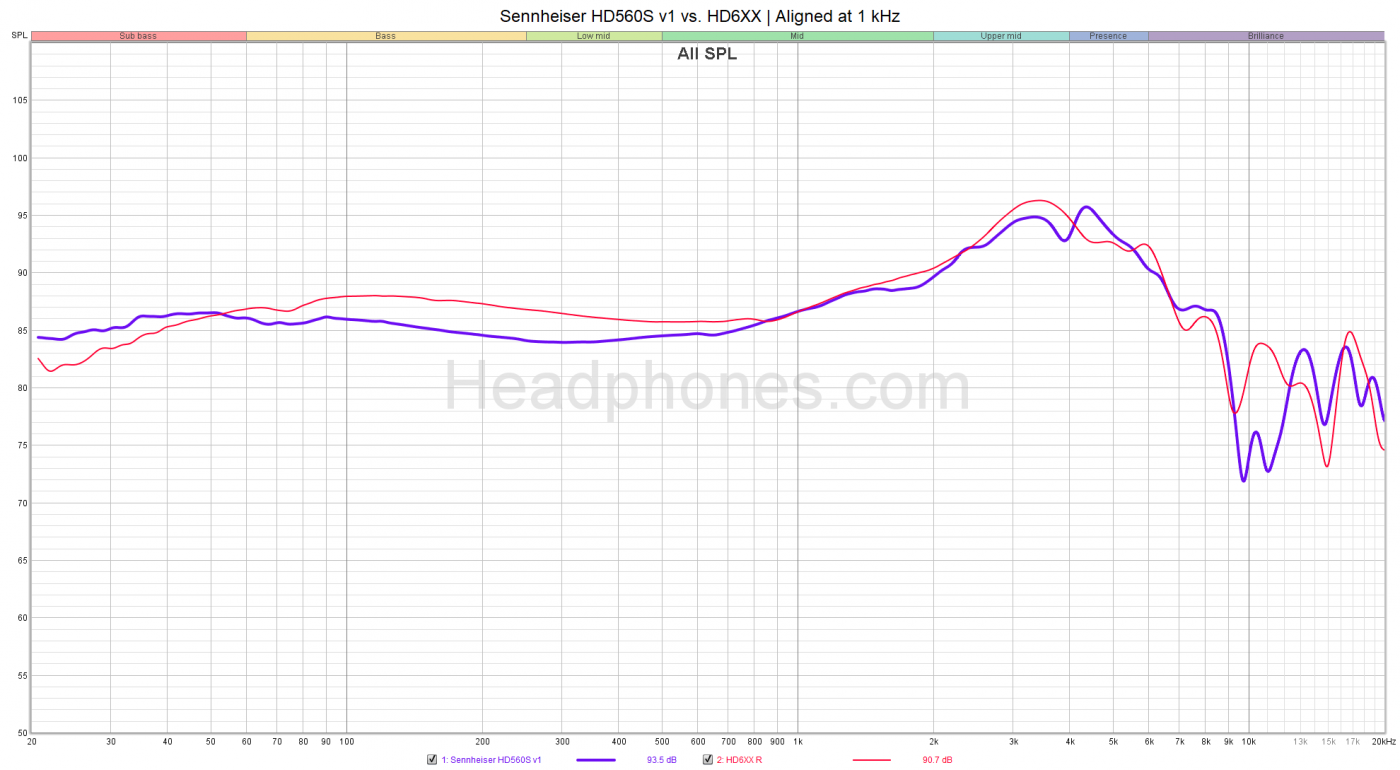
To be fair, this hump isn’t all bad. Hats and cymbals are crisper and more defined without being overly sharp or peaky. Vocal clarity is boosted to help individual voices better cut through the mix, especially when it comes to choruses or backing melodies. It does help to marginally sharpen the overall sonic image of the HD600. In the end, it’s a give and take. I think smoother midrange sound of the HD600 is better. The HD6X0 line-up is legendary for their midrange timbre and that’s no exception here. But I can definitely see the benefits that the HD560S’ approach brings. I think a midpoint between the two at this 4 – 6 kHz region would be ideal. In other words, a closer alignment to the Harman target.
As far as the upper treble is concerned, I don’t have any specific issues with it. You could nitpick that there isn’t too much air or treble brilliance but it’s inoffensive. It’s essentially a similar setup as the HD600. The treble on both of these headphones are sufficiently there.
Presentation
The soundstage of the HD560S is a less intimate than that of the HD600. It feels just slightly more open with tighter imaging compared to the infamous 3-blob effect of the HD6X0 line. Where the HD600’s stage can feel squished together, the HD560S opens it up just enough to suppress that sensation. Instrument placement has better precision, with the overall image being pushed touch forward as well.

Resolution and layering is one aspect where the HD560S does fall a little short of the HD600. The HD600 has better nuance and is more refined than the HD560S. It pulls just a little more detail from instruments and more naturally layers them atop each other. Though it has good imaging, the HD560S doesn’t allow you to isolate instrument lines as easily as the HD600.
I like to think of the difference in presentation between the HD560S and HD600 like leaning forward in a chair vs. sinking casually into it. The relaxed nature of the HD600 is that sensation of leisurely enjoying music while the HD560S has an analytical slant to it for focused listening.
Love our in-depth reviews?
We test and review hundreds of headphones every year. Sign up to get the latest news, reviews, guides, and more in your inbox. Join the 60,000+ like-minded audio lovers who love our newsletter!
Comparisons to the HiFiMan HE400se
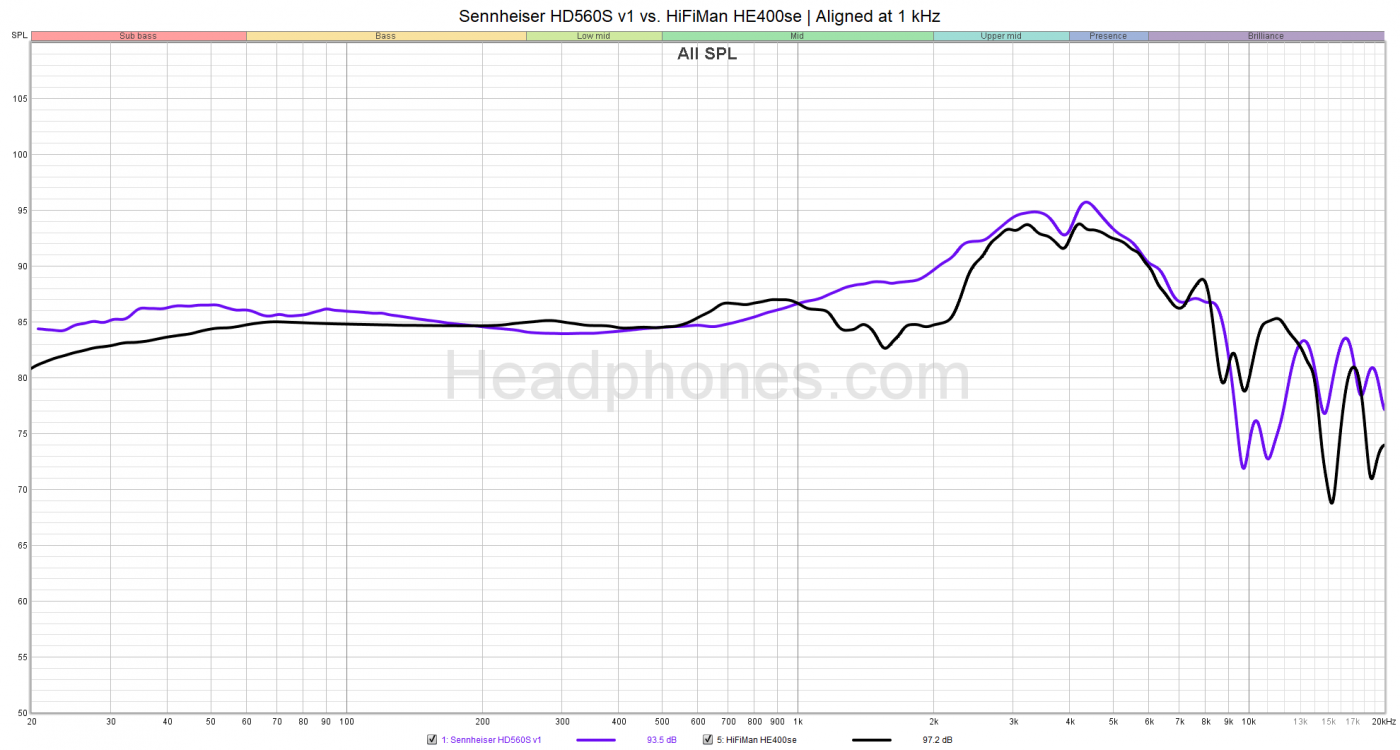
While the obvious competitor to the HD560S is the HD600, the $150 HiFiMan HE400se should be noted as well. Generally speaking, the tonality of the HD560S across a wider range of genres and vocalists. The awkward ~ 800 Hz hump and 2 kHz dip on the HE400se isn’t doing any favours for its midrange timbre. It has clarity but forgoes midrange body. Treble wise, while the HE400se lacks the 4 – 6 kHz treble hump, it has treble peaks that introduces sibilance and gives hats and cymbals a tizzy sound. The bass of the HE400se is cleaner, tighter, and more agile but isn’t as weighty. Where the HE400se gains points is in its technical performance. Though its soundstage is roughly on par with the HD560S, its imaging pulls a little ahead. Instrument separation, nuance, and layering in particular are better on the HE400se. While the HD600 does win on the resolution front, the HE400se edges out the HD560S.
I think the question of HE400se vs. HD560S is the same question as HE400se vs. HD600. By that I mean the HD560S and HD600 are much more similar in nature than the HE400se. While I derive about the same amount of enjoyment listening to all three for music, I would personally stick with the HD600 as it strikes the best balance among all three with the least compromise.
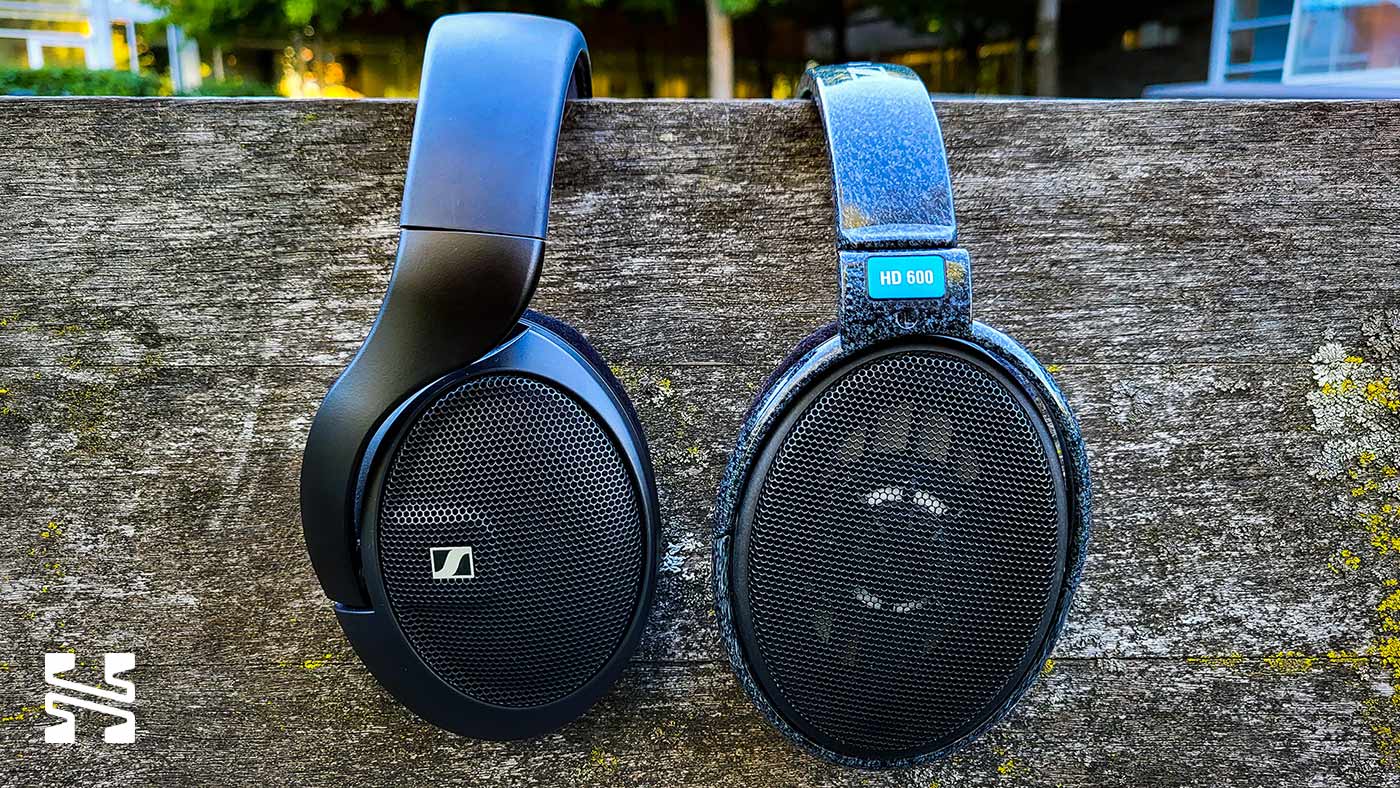
Should You Buy It?
Yes, if you can get it on sale and/or are hesitant to get a used HD6X0. To be honest, the price point of $200 is a little awkward. For many years, the HD6XX from Drop.com came in at that price. As such, the price of HD6X0 has been generally set at the $200 mark for a new HD6XX or used HD6X0 if you can find one. While recent price hikes have driven the HD6X0 to $280 and <$200 HD6X0’s on the used market have consequently become rarer, that price inertia still exists. Thus, the value proposition of the HD560S is less appealing. Ideally, if it were around $150 or so the HD560S would be a great deal. As it stands, it’s a fair one. At the end of the day, the hardest part of recommending the HD560S is that it’s not the HD6X0. It’s just almost one.
Alternatively, if you’re on a tighter budget, the HE400se may give you a better bang for your buck. If they cost the same, the HD560S would be my preference. But when you can frequently find the HE400se on sale at $110, it’s a hard battle for the HD560S. It’s moreso a question of your wallet at that point.
I mentioned at the start that for the longest time, I had long considered the HD6X0 to be the starting point for “audiophile” level sound quality. It was the HE400se that lowered that bar. I can now confidently say the HD560S deserves to be added to the list.
